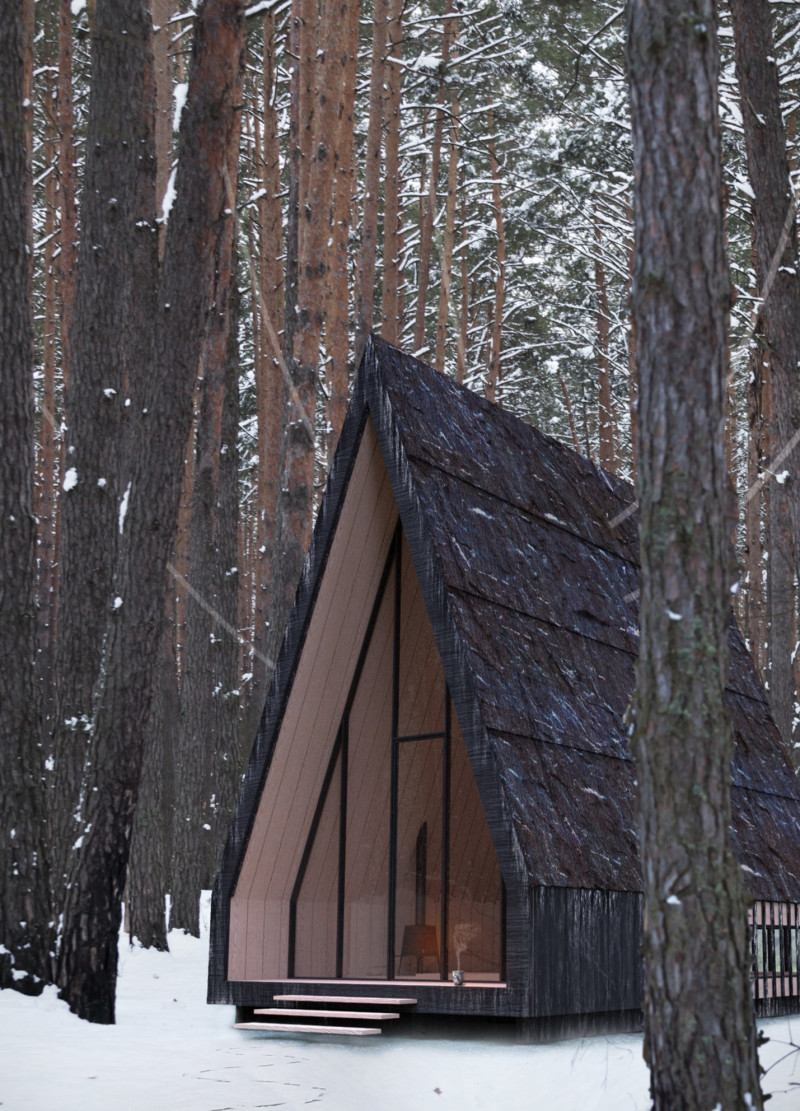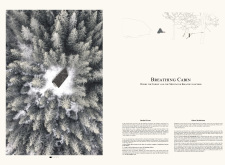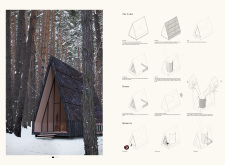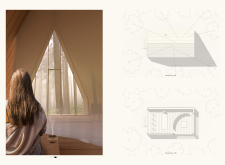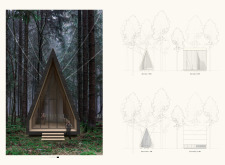5 key facts about this project
The Breathing Cabin project, located in the green landscape of Ozolini Farm in Latvia, functions as a retreat for meditation and reflection. The design seeks to create a strong bond between the occupants and the surrounding nature. It emphasizes a mindful atmosphere where visitors can pause and connect with their thoughts while surrounded by the beauty of the outdoors.
Structural Design and Form
The cabin features a sharp-pitched roof, which is common in traditional Latvian wooden structures. This form is well-suited to the area's weather, particularly during heavy snowfall and rain. The building is elevated, allowing for better drainage and airflow. This approach not only ensures durability but also respects the ecological environment of Ozolini Farm.
Natural Light and Spatial Quality
Ample natural light fills the cabin through large windows and lower glazing. This design choice enhances the overall atmosphere, creating a welcoming space that encourages occupants to engage with their surroundings. The arrangement of spaces within the cabin is carefully considered, catering to both individual reflection and shared experiences.
Materiality and Sensory Engagement
Natural materials are used thoughtfully in the construction, reinforcing the connection to the landscape. The roof is made from tree bark, promoting a sustainable approach and blending the structure into its natural setting. Timber is used for the walls, reflecting local building traditions and enriching the sensory experience for those inside.
Interaction with Nature
The design includes a porch that links the cabin to the outdoors, inviting visitors to step outside and experience the landscape directly. Semi-transparent chiffon curtains divide spaces within the cabin, enhancing openness while providing some privacy. These elements emphasize the cabin's role as a place for meditation, allowing the indoor experience to flow into the natural world outside.
The tree bark roof not only offers insulation but also connects the cabin directly to its surrounding environment. It serves as a reminder of the natural elements, creating a space that respects and celebrates the beauty of nature.


